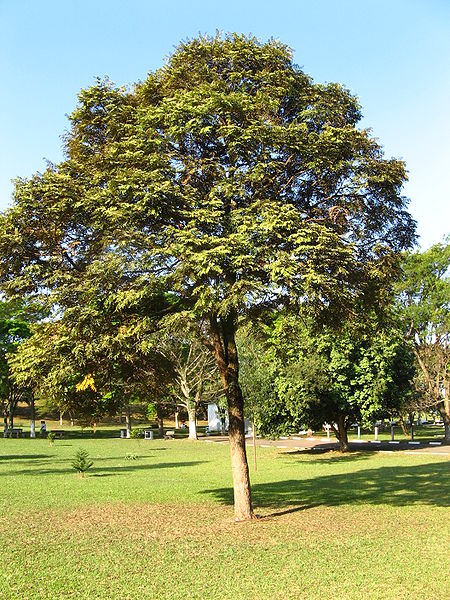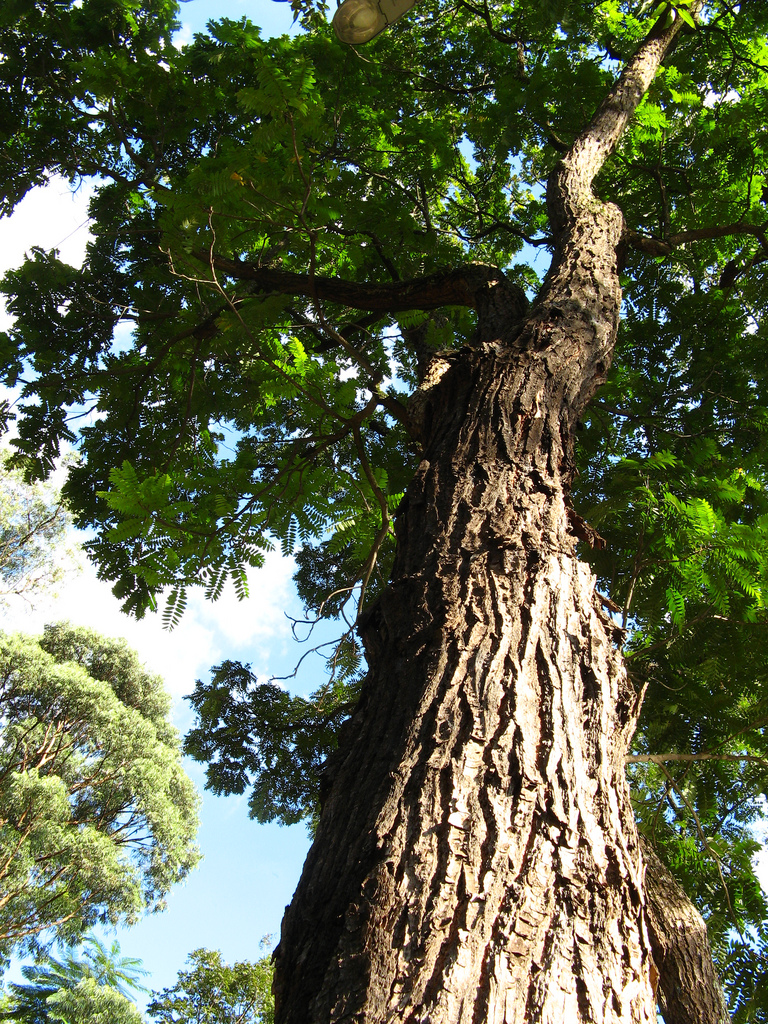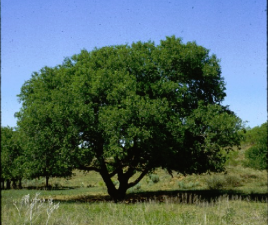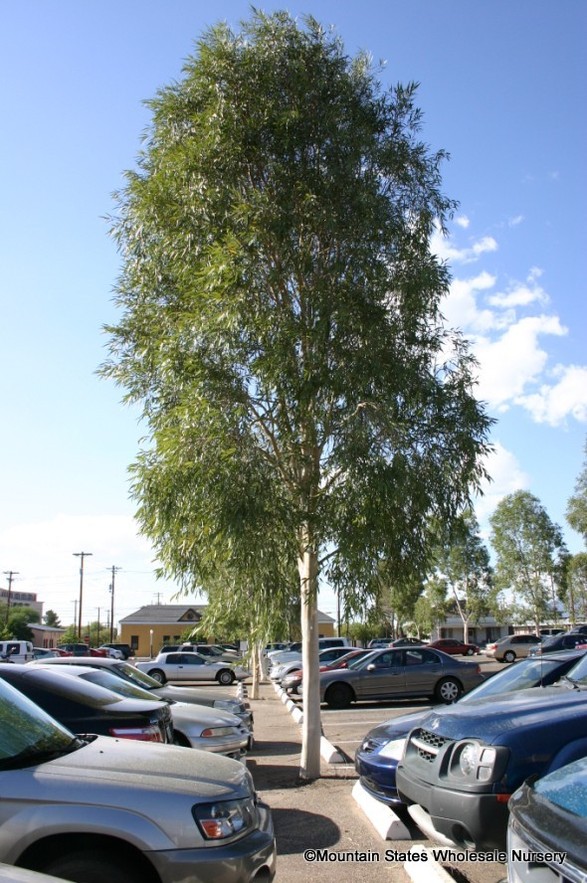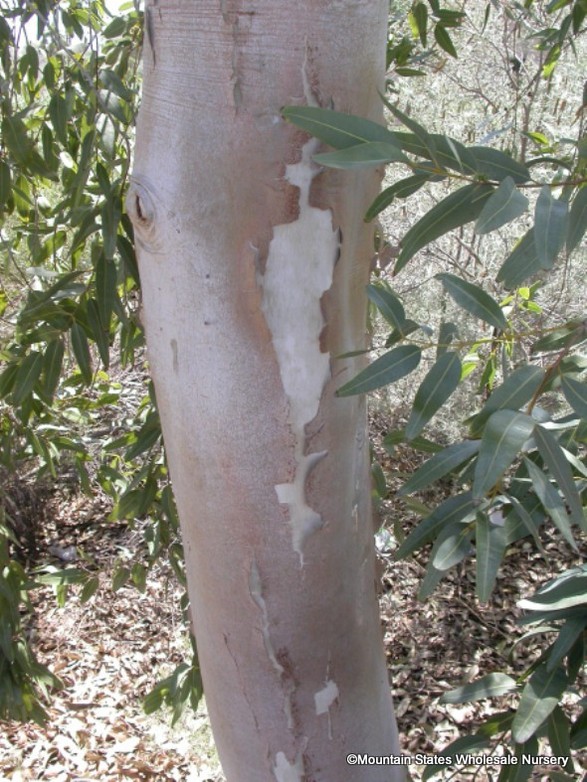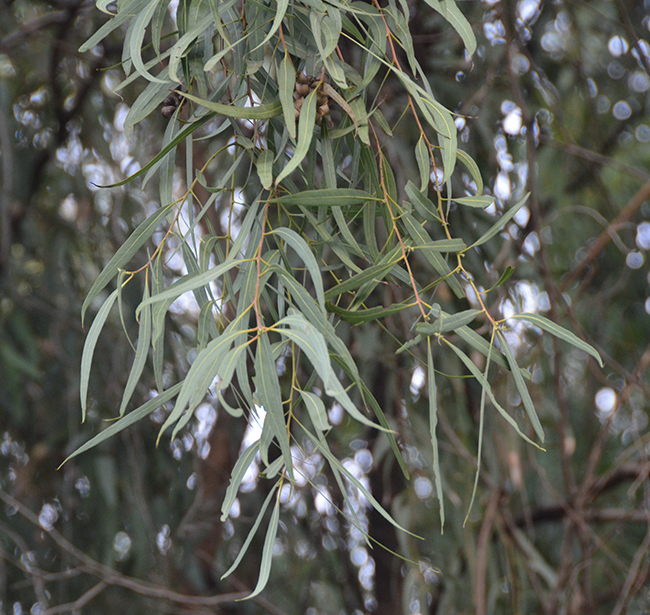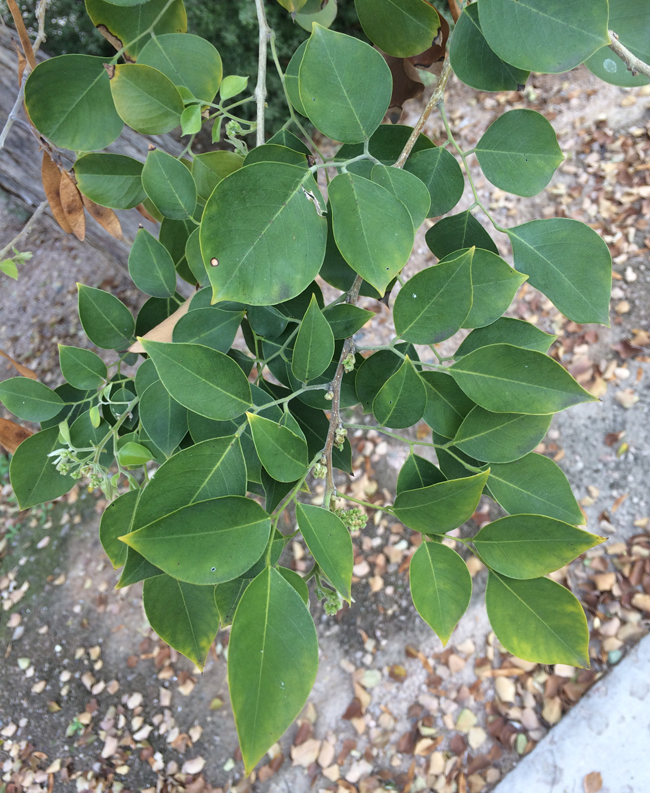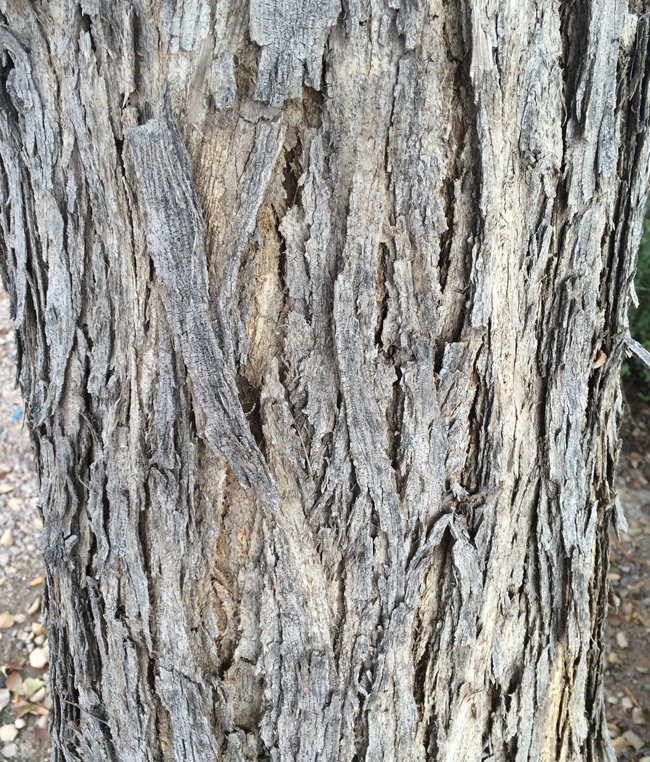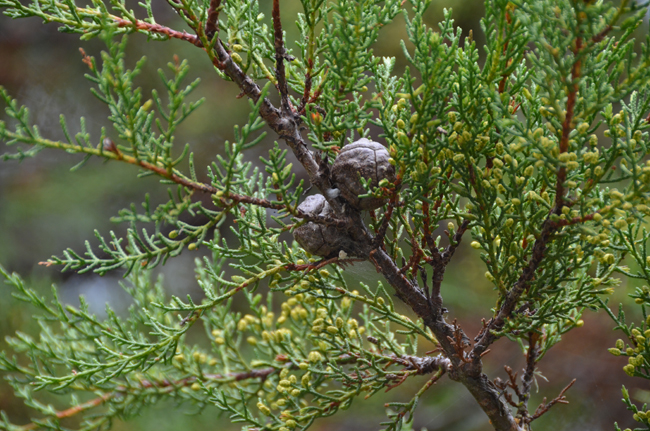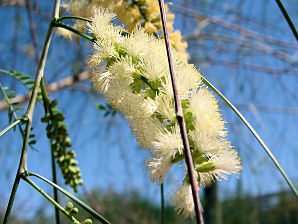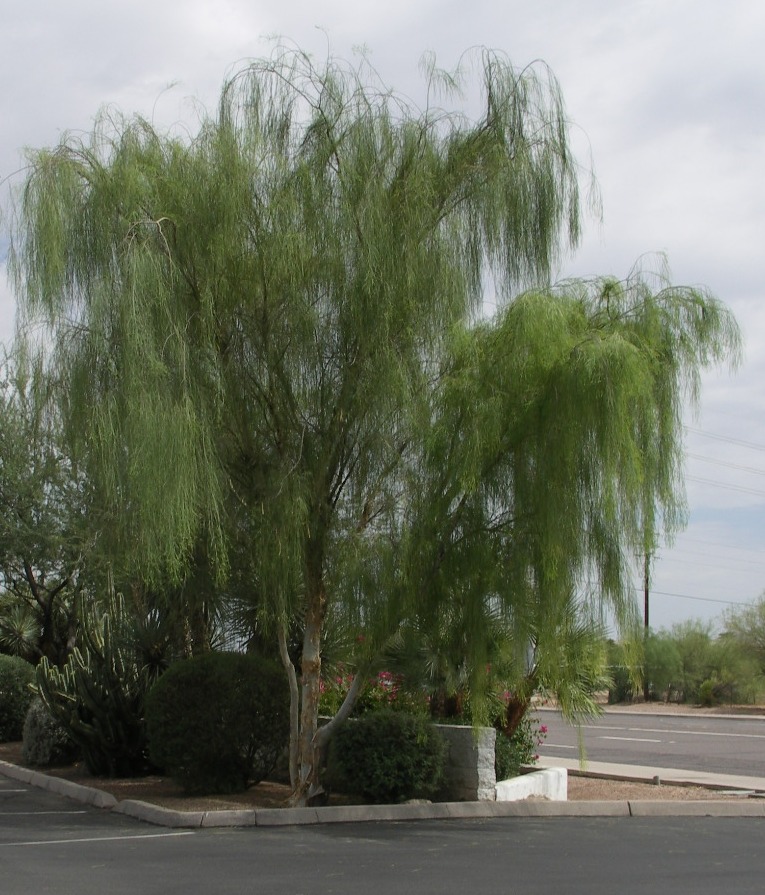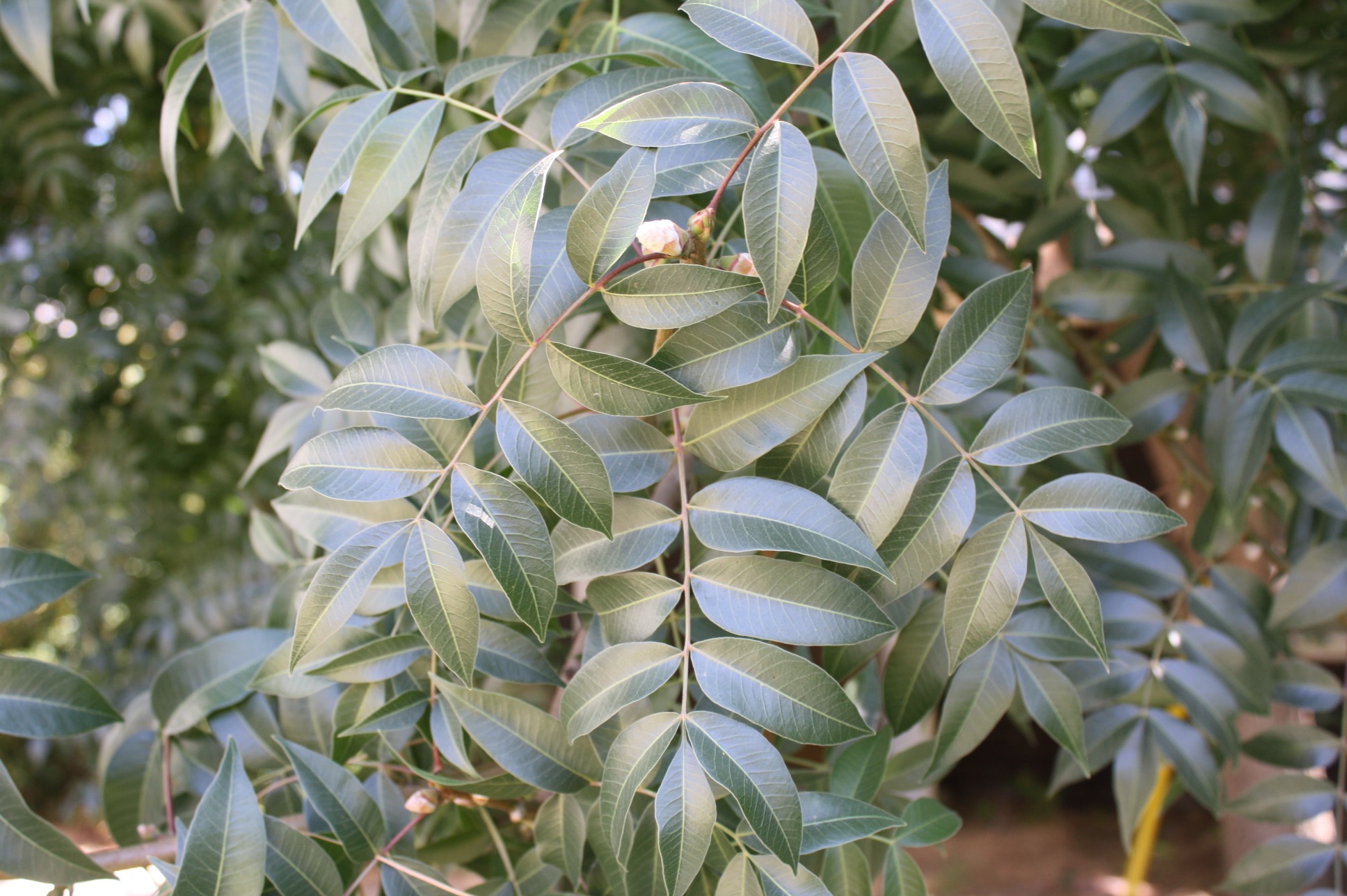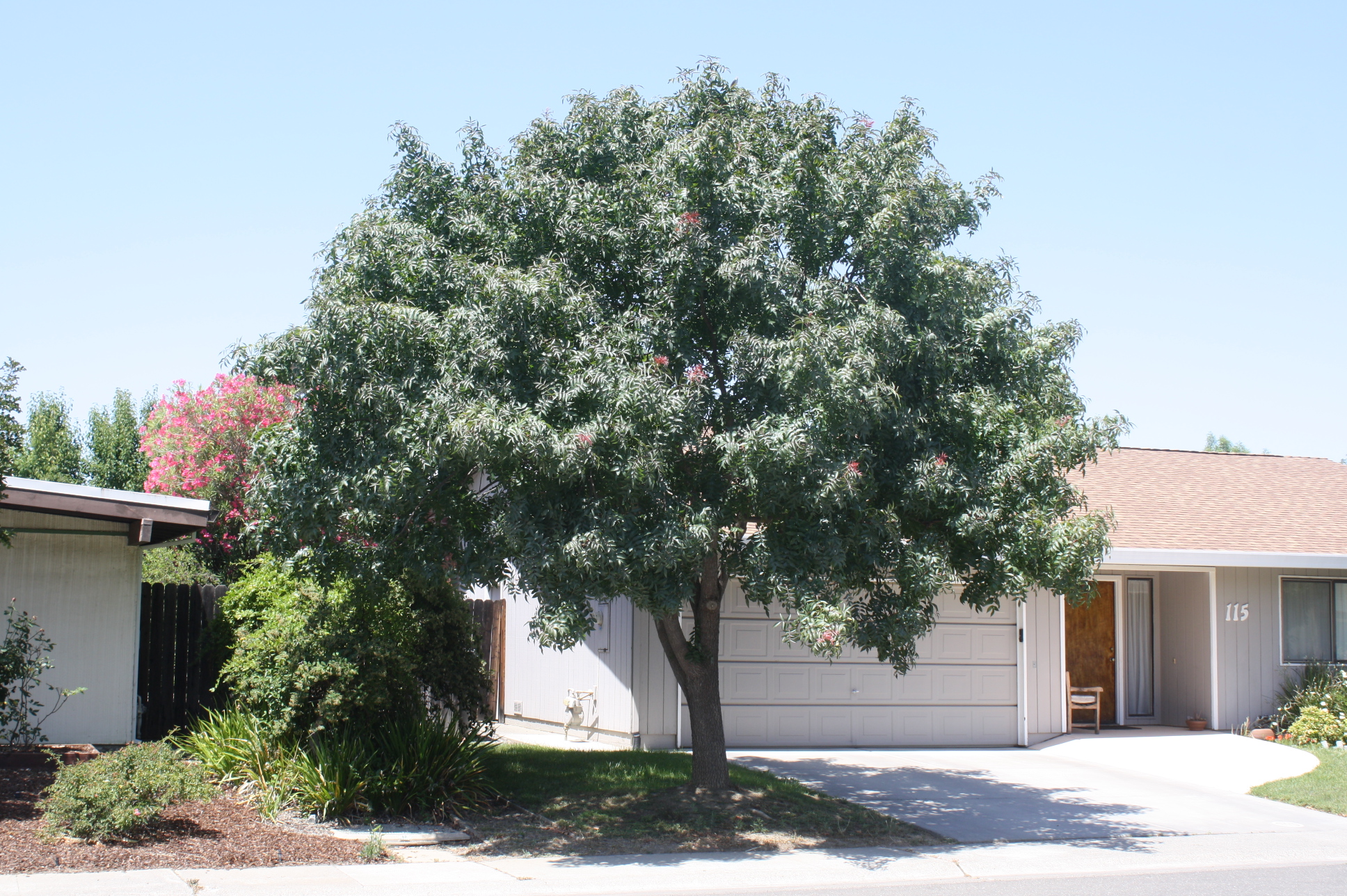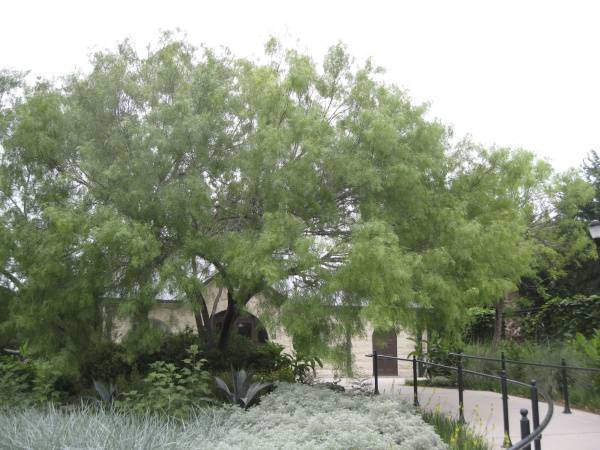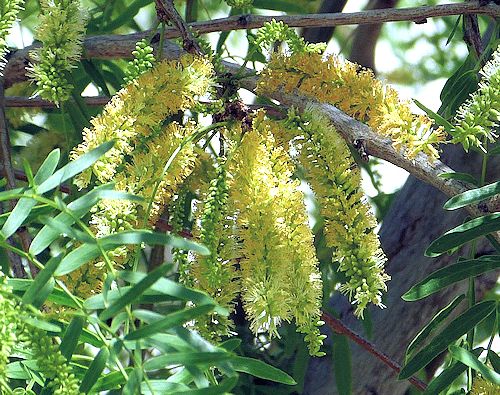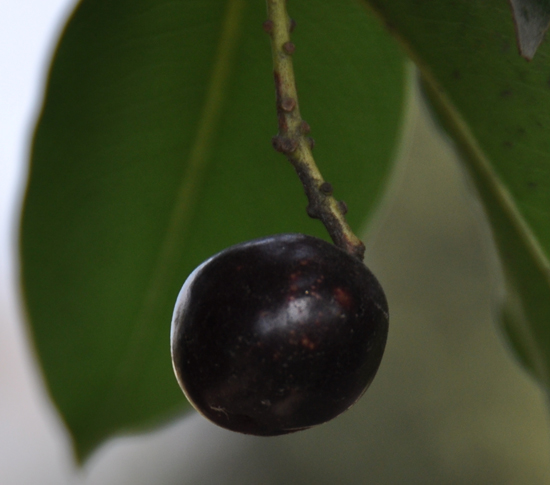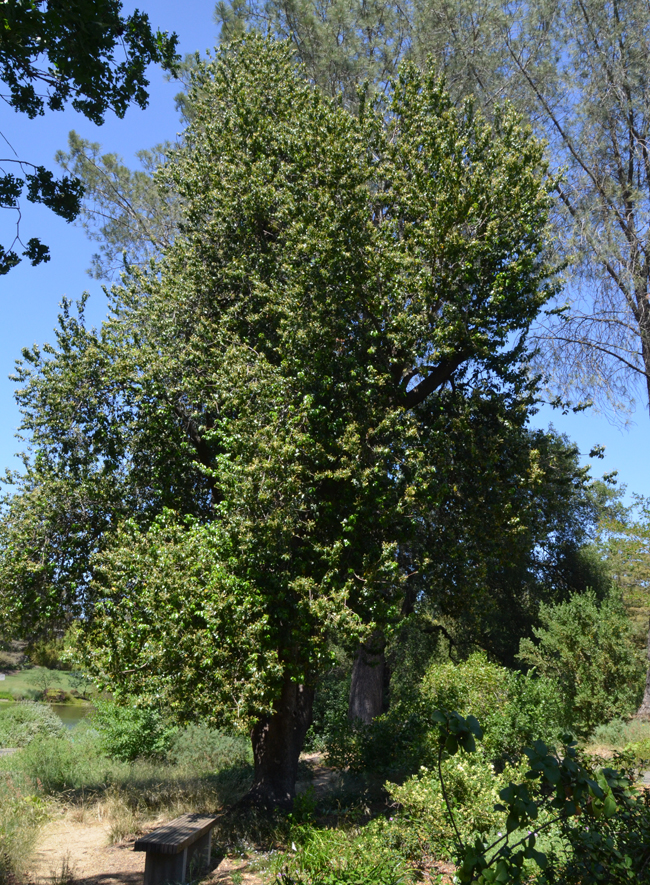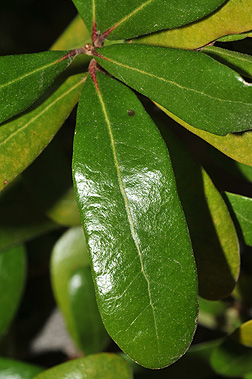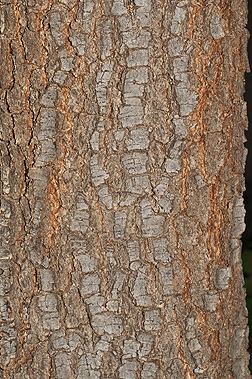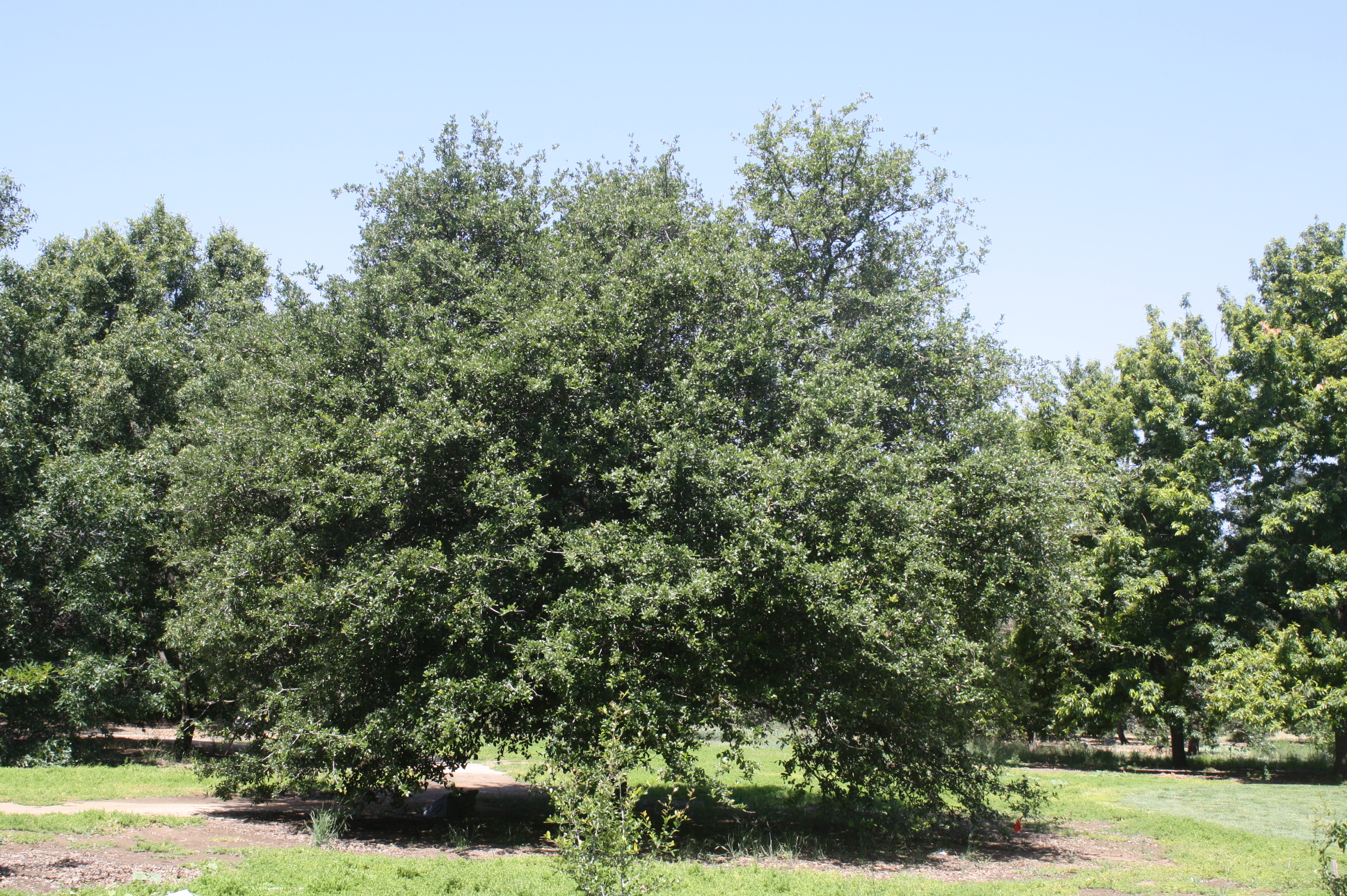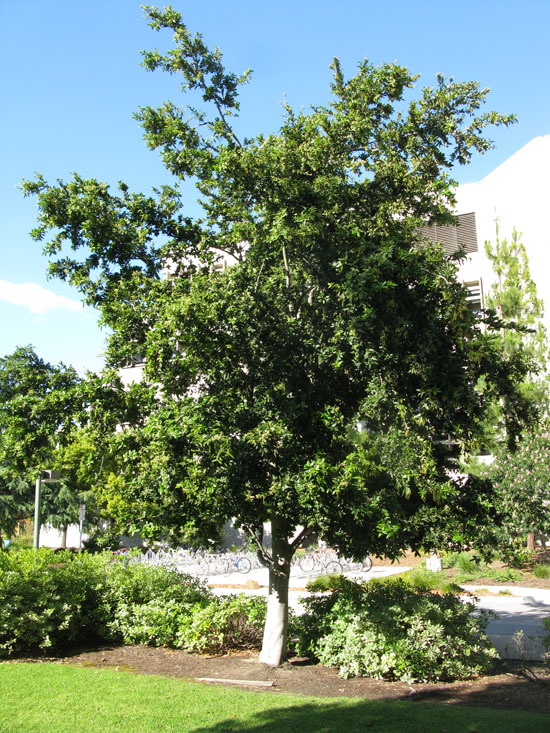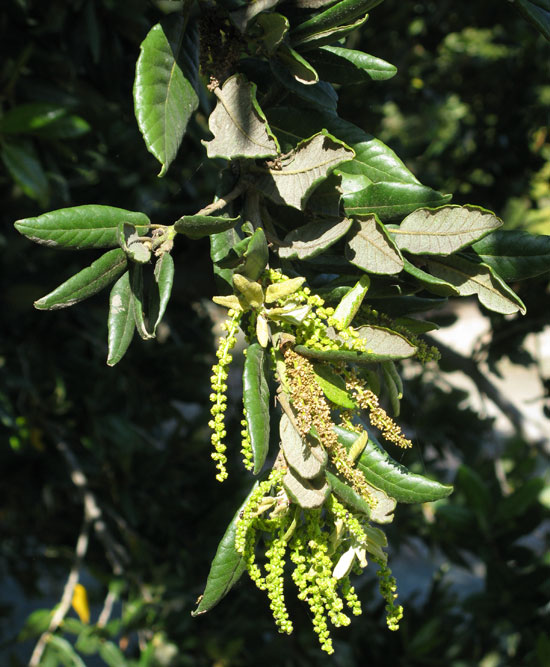Mulga (Acacia aneura)
Mulga is native to arid Western Australia and tolerates hot and dry condition. It can grow in sandy, loam, or clay soil types. This versatile and hardy tree produces ascending thornless branches and grows 15 to 20 feet in height. The leaves are evergreen and the tree has yellow, showy flowers in the spring.
Brazilian Cedarwood (Cedrela fissilis)
Brazilian cedarwood is a long lived, moderately growing deciduous tree that can reach a height of 40 to 50 in Southern California. This tree tolerates most soil types that drain well, and is considered drought tolerant. Brazilian cedarwoods produce a pale yellow tubular flower and the fruit is a woody capsule that splits lengthwise to form a five-lobed star.
Netleaf Hackberry (Celtis reticulata)
The Netleaf Hackberry is native to riparian areas in the Southwest. A deciduous tree, it reaches heights of 25 to 35 feet with spreading or weeping canopy. The ovate leaves are medium green and turn yellow in the fall. The flowers mature into red drupes that attract birds. The Netleaf Hackberry is drought tolerant and able to thrive in variety of soil types. First photo credit: Benny J. Simpson and Texas A&M AgriLife Research.
Ghost Gum (Corymbia papuana)
The Ghost Gum is native to Australia and is a smaller eucalyptus, reaching 66 feet. The trunk is smooth and snow white. It has gray green evergreen leaves that are tinged purple by frost. White flowers bloom in the summer. It tolerates drought but can be used in well-irrigated landscapes. First two photo credit: Mountain States Wholesale Nursery.
Rosewood (Dalbergia sissoo)
The Rosewood is native to Northern India and its evergreen foliage can be damaged by frost. The tree recovers quickly in the spring. It reaches a height of 30 to 50 feet with a 40 foot canopy spread. Rosewood tolerates periods of drought and can grow in sandy, clay and loam soil types. Its roots host nitrogen-fixing bacteria. The flowers are inconspicuous.
Tecate Cypress (Hesperocyparis forbesii)
Native to the coastal mountains of Southern California the tecate cypress is a fast growing, low branching evergreen tree that grows 10 to 25 feet tall and 20 feet wide. Growth rate slows after it reaches 15 feet. The bark of this tree is cherry red when young and dark brown when older.
Palo Blanco (Mariosousa willardiana)
Native to Sonora Mexico, Palo Blanco thrives in full sun and tolerates great heat. It prefers good drainage and can tolerate thin rocky soil. This tree has a weeping branching habit and grows 10 to 20 feet high, spreading 5 to 10 feet. Palo Blanco is a moderate grower that has thornless branches, peeling silvery white bark, and creamy white flower catkins that are present in spring.
Red Push Pistache (Pistacia ‘Red Push’)
The ‘Red Push’ is a hybrid between (P. atlantica) and (P. integerrima). This long-lived deciduous tree has a moderate growth rate, and will reach 25 to 40 feet tall and develop a broad spreading form, 20 to 40 feed wide. The pinnately compound leaves first emerge with a red tint, mature to a medium green color, and then provide another color display in the fall. ‘Red Push’ is cold and drought tolerant, requires full sun, and can adapt to a variety of soils. First photo credit: Mountain State Whole Sale Nursery.
Maverick Mesquite (Prosopis glandulosa ‘Maverick’)
Maverick is an upright-growing, thornless cultivar of the honey mesquite tree, which is native to the sourthwestern United States. This deciduous tree can quickly reach a height of 30 feet tall and 30 to 35 feet wide. The tree is cold hardy, drought tolerant, and adaptable to a range of soil types. The smooth gray bark provides contrast to the bright green foliage. Third photo credit: Mountain States Wholesale Nursery.
Catalina Cherry (Prunus ilicifolia ssp. lyonii)
The Catalina Cherry is native to California’s Channel Islands. In urban areas they grow 15 to 20 feet in height and width. White flower clusters, racemes up to 5 inches long, appear in late spring. Black fruits attract birds; avoid planing near paved surfaces or parking areas as fallen fruit causes stains. Plantingt in full or part sun and in well-drained soil. This tree is drought tolerant but looks best with occasional deep soaking.
Escarpment Live Oak (Quercus fusiformis)
The escarpment live oak is native to west Texas, is cold hardy, drought tolerant, and requires full sun. Typically evergreen, it can be deciduous in colder climates. This live oak is a slow grower that can reach 50 feet in height and width. The escarpment live oak can tolerate a wide range of soils but prefers good drainage.
Island Oak (Quercus tomentella)
The island oak is native to five of the California Channel Islands and Guadalupe Island off Baja California. It is evergreen and fast growing to a height of 20 to 50 feet and width of 25 to 40 feet, growth rate can be up to 24 inches per season. This oak prefers deep, moist soils but can tolerate a wide range of soil conditions and soil types including clay, loam, and sand. This tree is considered drought tolerant and cold hardy.




